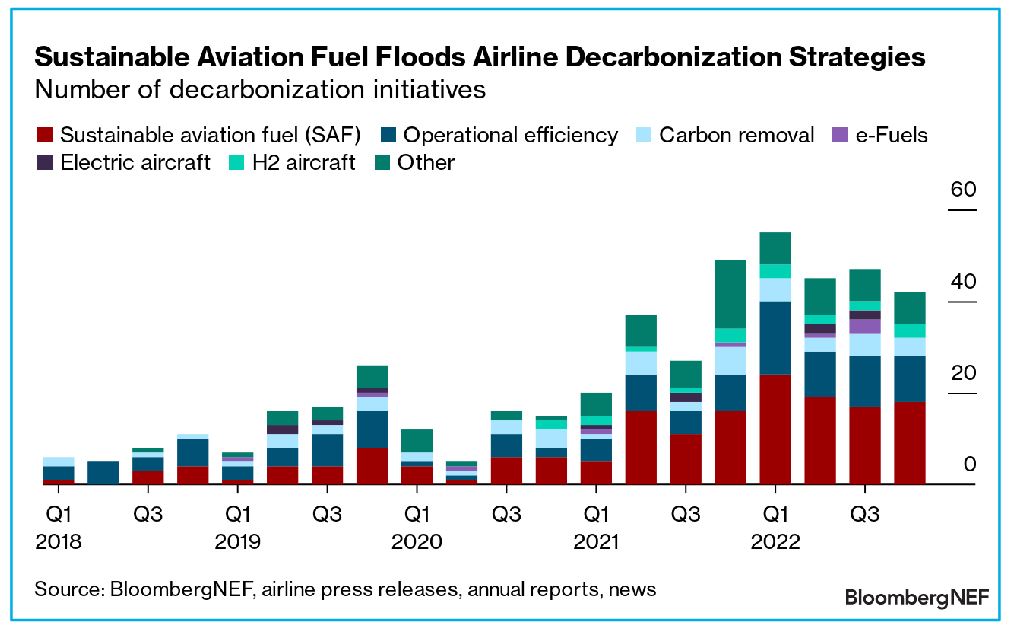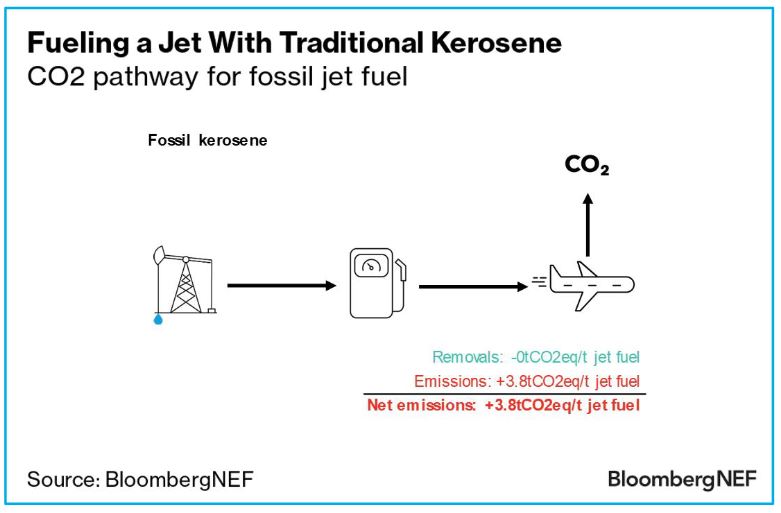By Kamala Schelling, PhD, Editor, BloombergNEF
When it comes to decarbonizing the infamously emissions-intensive aviation industry, a truly sustainable aviation fuel is the holy grail.
Around the globe, airlines are lining up to get onboard. Australia’s Qantas Airways Ltd is joining forces with airline manufacturer Airbus SE on a major sustainable fuel investment project. Sweden’s Braathens Regional Airlines has claimed the first commercial flight powered entirely by sustainable fuel. Alaskan Air, Singapore Airlines, EasyJet, and JetBlue are all getting into the sustainable fuel game. And United Airlines has even recruited Oscar the Grouch to represent the cause.
“In 2018, we counted eight sustainable aviation fuel initiatives among airline decarbonization strategies,” says Anastacia Davies, head of biofuels for BNEF. “In 2022, we saw 78 — and that was just through November.”

A variety of methods for producing ‘SAF’ — as sustainable aviation fuel is known to insiders — are possible. The most common by far is hydroprocessing, which is similar to oil refining but uses bio-based feedstocks instead of crude oil.
But it’s fuels produced through the power-to-liquids process, otherwise known as e-fuels, that are really getting noticed.
“E-fuel investment is growing like wildfire,” says Davies. “It saw nearly $600 million in venture capital investment in 2022. That’s compared to $141 million for the second-place process – gasification.”

So how does e-kerosene work? As part of its fuel combustion process, a jet produces carbon dioxide (CO2). If the fuel in its engine comes from fossil fuels, then the net result from extraction to combustion is a large amount of CO2 equivalent — roughly 3.8 metric tons per ton of jet fuel — simply released into the atmosphere.

E-jet fuel, by contrast, exists in a beautifully circular system of carbon-dioxide emission, capture and utilization. If the jet’s CO2 emissions can be captured and combined with hydrogen, then the resulting cocktail can be stirred — through a process known as CO2 hydrogenation — into a new batch of jet fuel.

But there’s a rub: capturing carbon dioxide from the air is an incredibly expensive process, and it’s unclear if airlines and their customers will be willing to help foot the bill. “At the moment, we have calculated that e-kerosene costs between four and nine times as much as fossil-based jet fuels,” says Davies. “Over time, the figure could drop to double the price of fossil-fuel kerosene, but that may still be a bitter pill to swallow.”